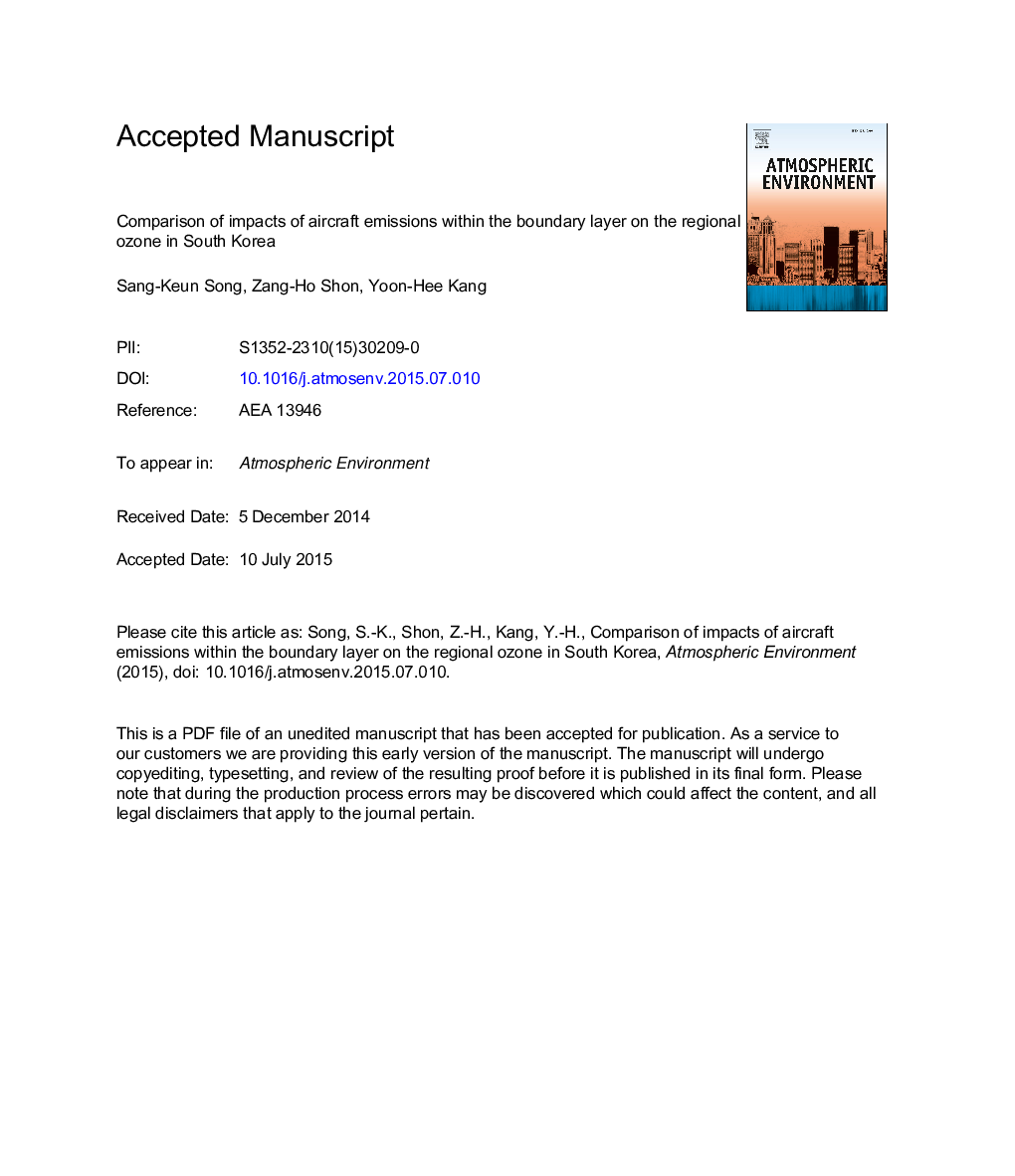| Article ID | Journal | Published Year | Pages | File Type |
|---|---|---|---|---|
| 6337737 | Atmospheric Environment | 2015 | 32 Pages |
Abstract
In this study, the air pollutants emitted from aircraft within the boundary layer (BL) were investigated for their impacts on the ozone (O3) concentration at and around three international airports (Incheon, RKSI; Gimpo, RKSS; and Jeju, RKPC) using the WRF-CMAQ modeling system during the summer of 2010. The analysis was performed using two sets of simulation scenarios: (1) with (i.e., TOTAL case) and (2) without aircraft emissions (i.e., BASE case). The model study suggested that aircraft emissions within the BL over the three airports can have a significant impact on the O3 (and NOx) concentrations in the source regions (the airports) and their surrounding/downwind areas. A significant negative impact of aircraft emissions on the O3 concentrations in the late afternoon (19:00 LST) was predicted near the three airports with their largest impact of â20 ppb near the RKSI at 19:00 LST. This was attributed mainly to the high NOx conditions in the VOC-limited areas and possibly in part to the rapid titration of O3 by NO around these airports. The rate of photochemical O3 destruction due to the aircraft emissions near the three airports was the most dominant contributor to the O3 levels compared to the other physical processes.
Keywords
Related Topics
Physical Sciences and Engineering
Earth and Planetary Sciences
Atmospheric Science
Authors
Sang-Keun Song, Zang-Ho Shon, Yoon-Hee Kang,
